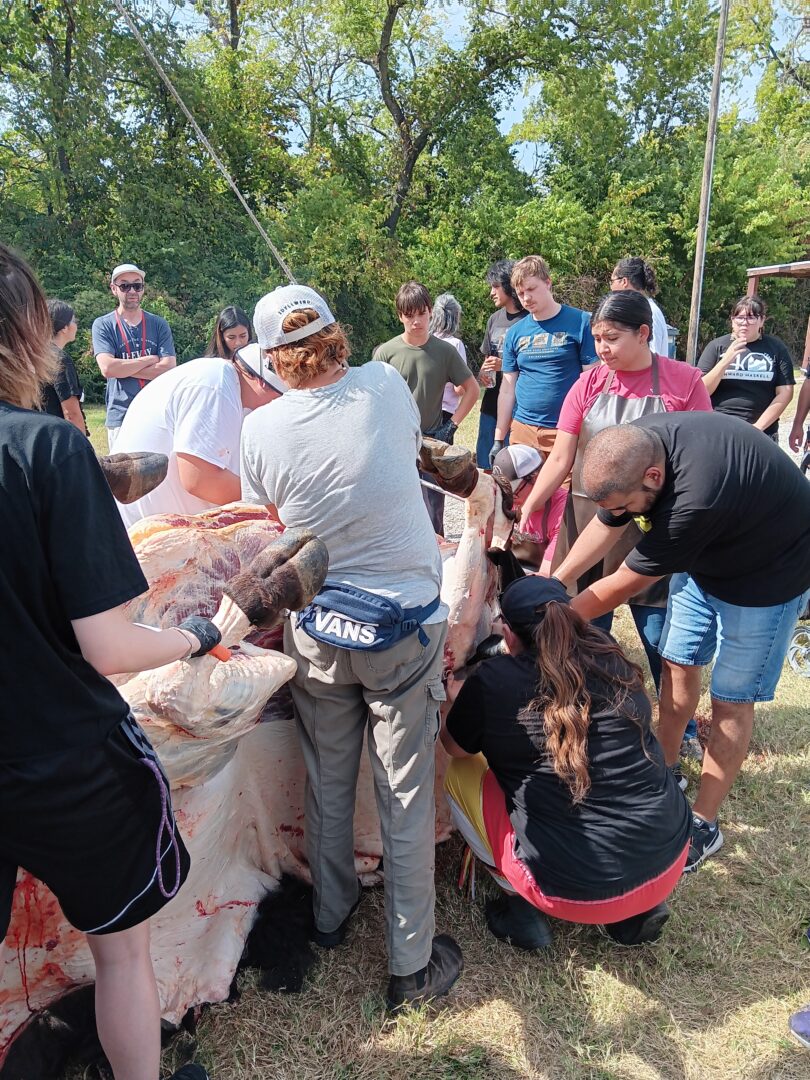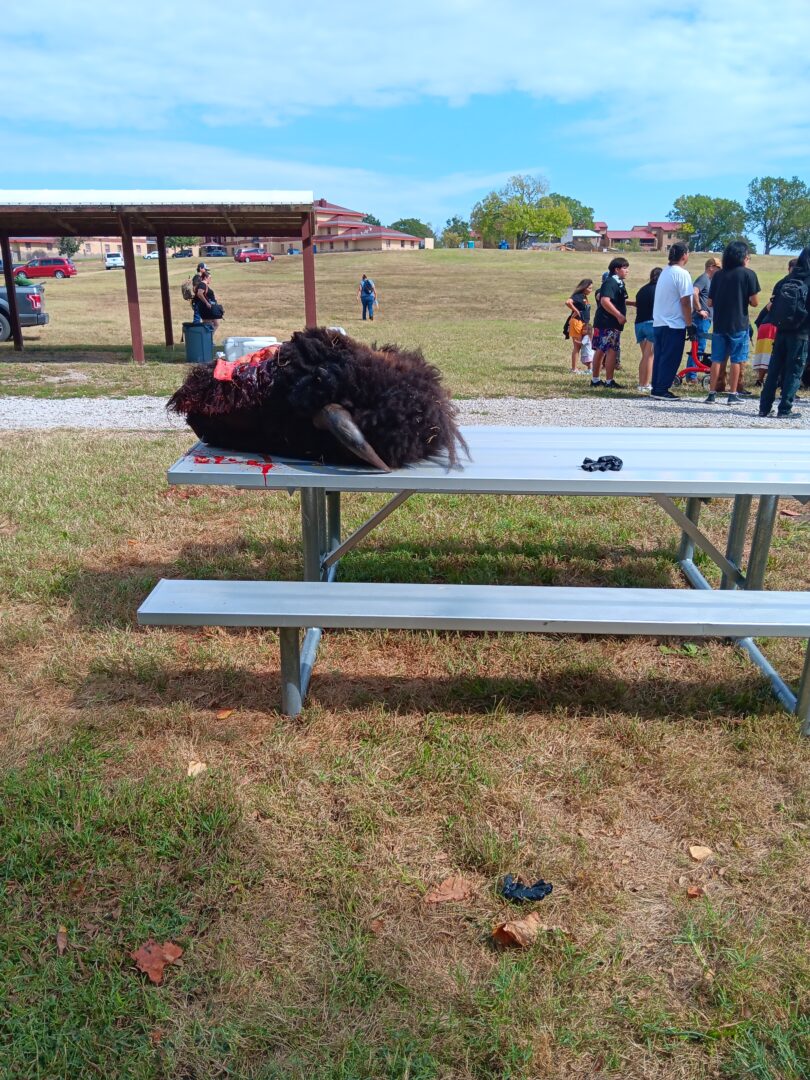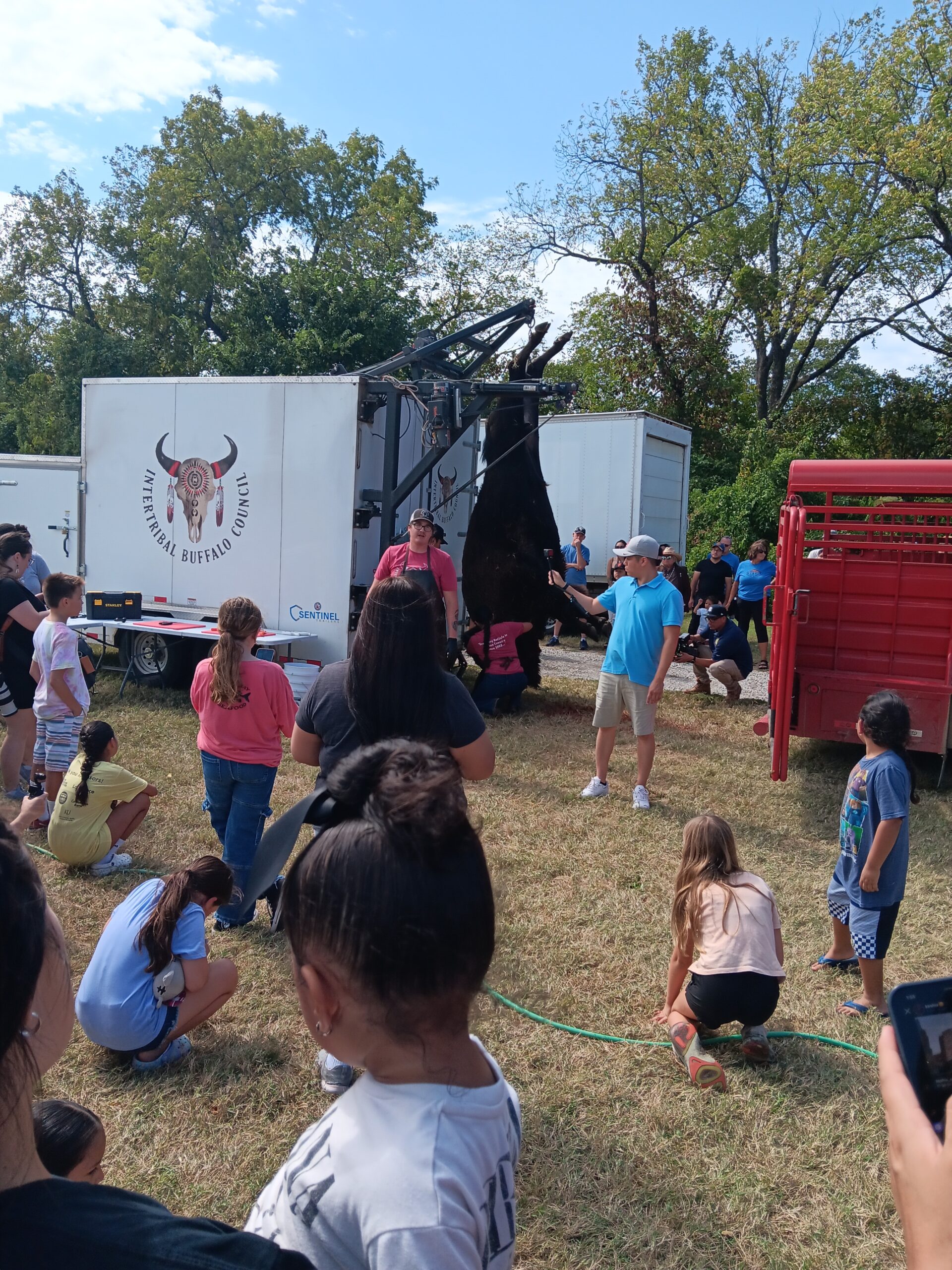On Sept. 21 and 22, 2024, the Haskell Indian Nations University, Southern Cheyenne, and Arapaho tribes hosted a Bison Harvest and Cookout on the university’s powwow grounds. The exciting event was postponed from last year to now, but it was definitely worth the wait. It was open to the public, and all were welcomed.
Through the U.S. Department of Agriculture Extension Program at Haskell, this day was able to come to fruition, and as a research assistant for the USDA program, Courtney King told me, “It was a really big deal for her and others in the program to see the turnout and enthusiasm that participants in the harvest held for it.” She mentioned the past of Haskell and how it used to be a boarding school whose infamous motto was to “Kill the Indian, save the man.”
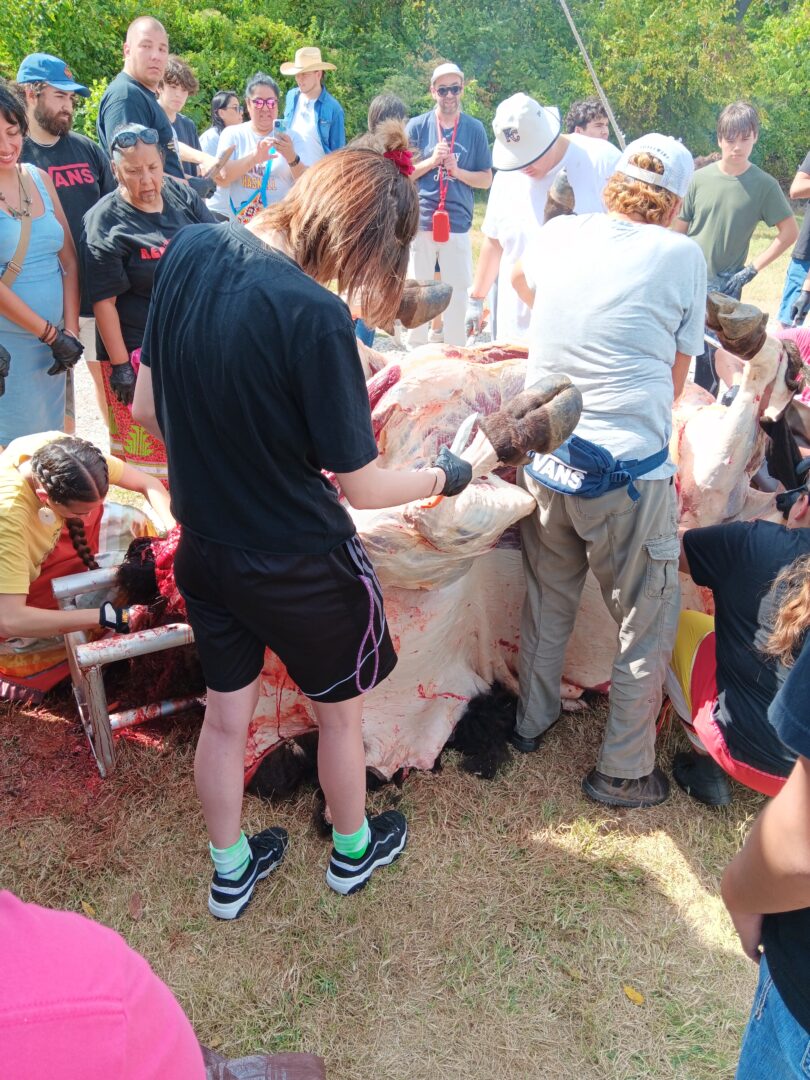
So 140 years later, it was such a welcome sight to be able to hold space for these kinds of cultural activities for the students of Haskell and the community of Lawrence. The harvesting event was scheduled for Saturday at 1 pm, but in true Native fashion, we all ran on Indian time that day, so the bison finally arrived at 2 pm, and we all gathered close around to view them. The two bison had already been euthanized before arriving at the powwow grounds, but it was still such a sight to see them and their sheer size.
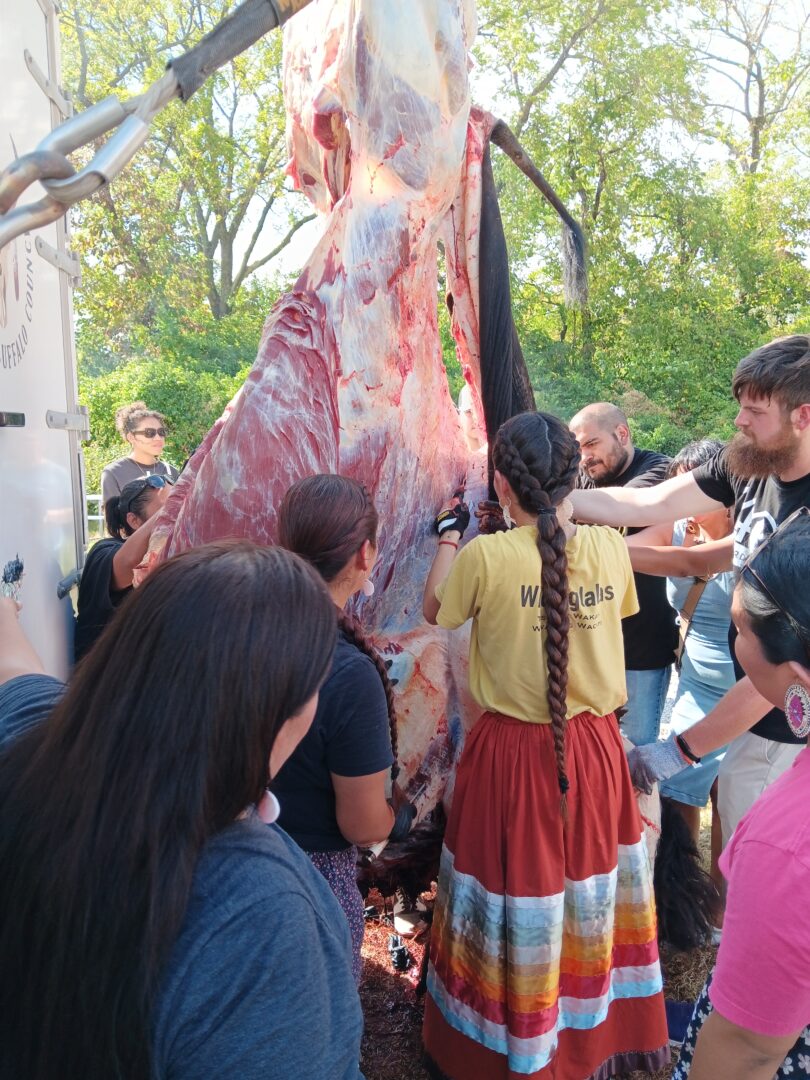
Bison roamed the United States in the millions before the late 1800s and are considered the largest mammal in North America. They are a national symbol of the U.S., but their history has been inextricably intertwined with many Indigenous communities and were critical to many tribe’s existences. By the 19th century, there were only a few hundred or so left due to European settlers pushing west, damaging their natural habitats and hunting them to near extinction due to seeing the reliance Indian tribes had on the buffalo. Without conservation programs within Tribal governments, the Department of the Interior, and other organizations, the North American Bison would have been extinct by now.
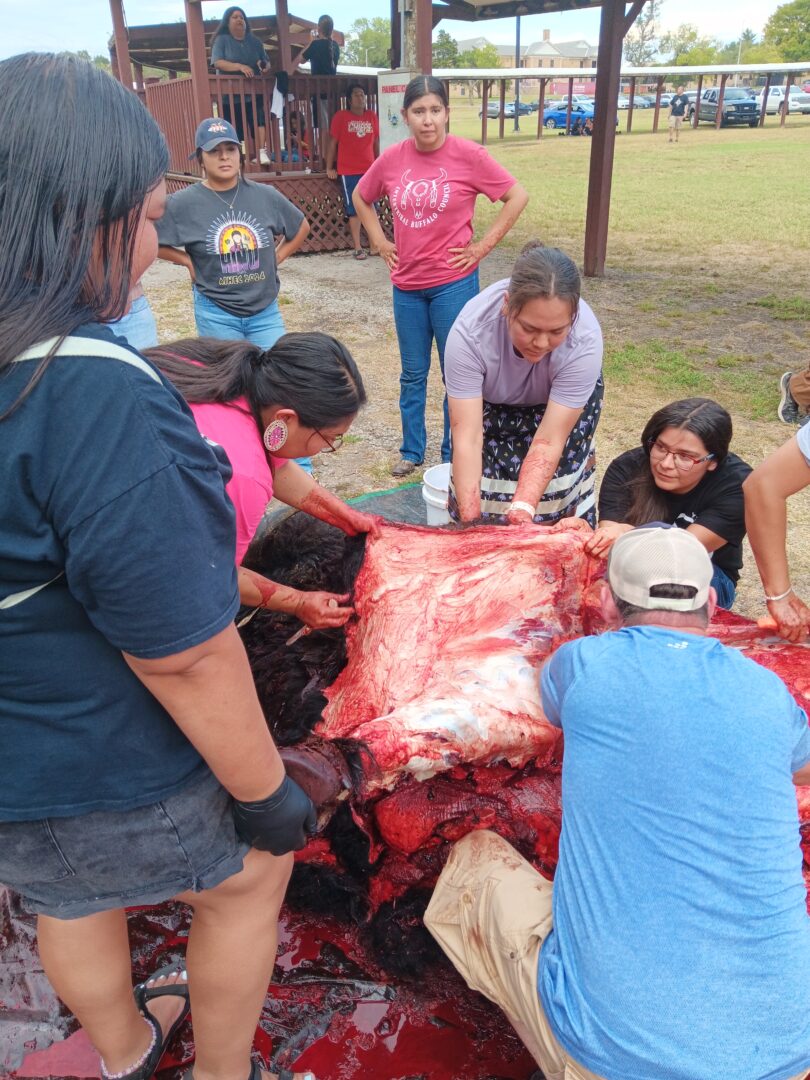
For my own tribe, the Cherokee Nation, there is a bison program that has a herd that roams 500 acres in Bull Hollow, an area within Delaware County, Oklahoma. They are a part of Cherokee heritage, and my tribe’s ancestors once lived alongside them, so to see them reintroduced to our reservation is a blessing beyond words, a true privilege. We are currently focused on growing the herd and not harvesting them, but that is what the Intertribal Buffalo Council is for. They are a collection of over 80 tribes in 20 different states that manage over 20,000 buffalo across the nation, and are also known as the Intertribal Bison Cooperative–But whatever they go by, their mission is to restore buffalo to Indian Country in order to preserve the cultural, traditional and spiritual connections to tribes, and for future Native American generations.
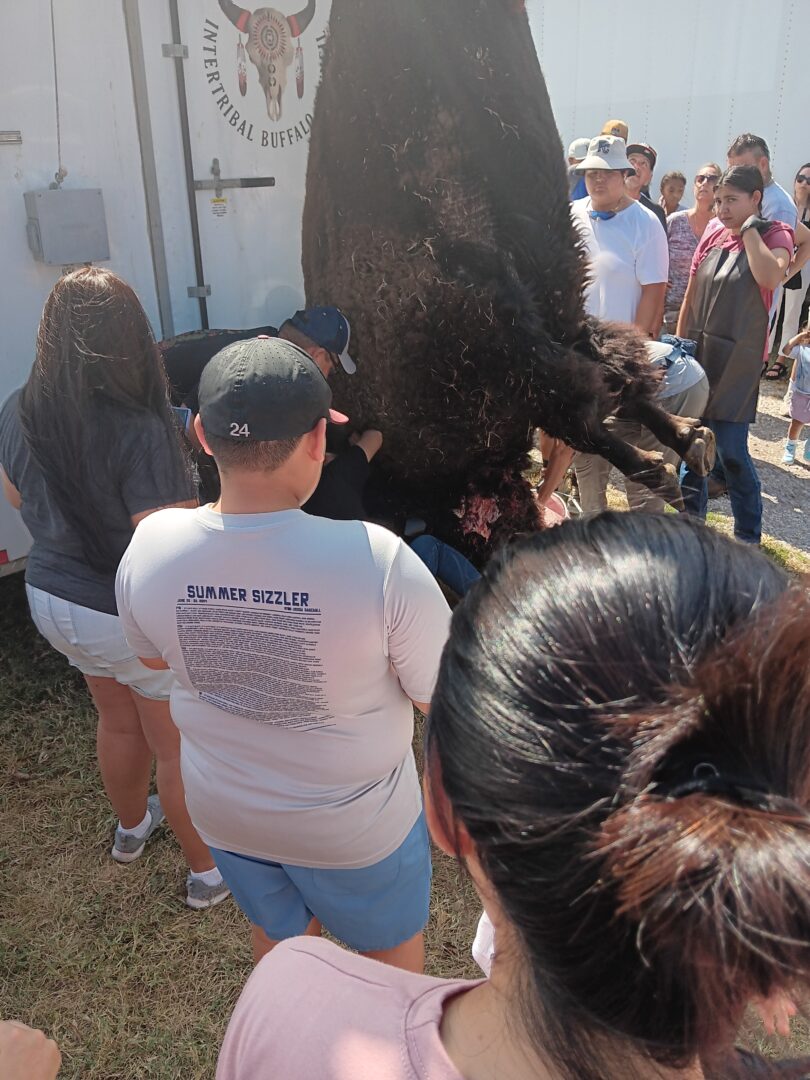
I met with some of their staff on Saturday during the harvest, Thomas Peters of the Meskwaki Nation, along with Randy Hawk of the Cheyenne and Arapaho, who both shared the history of the ITBC and their work within it. They have a mobile harvest trailer they haul around the country, and are able to travel around to various tribes and tribal schools who ask to harvest bison. Surplus bison from national parks such as Yellowstone, Grand Canyon, and Badlands, as well as refuges, preserves, and the Nature Conservancy, are relocated to member tribes and then used for harvesting.
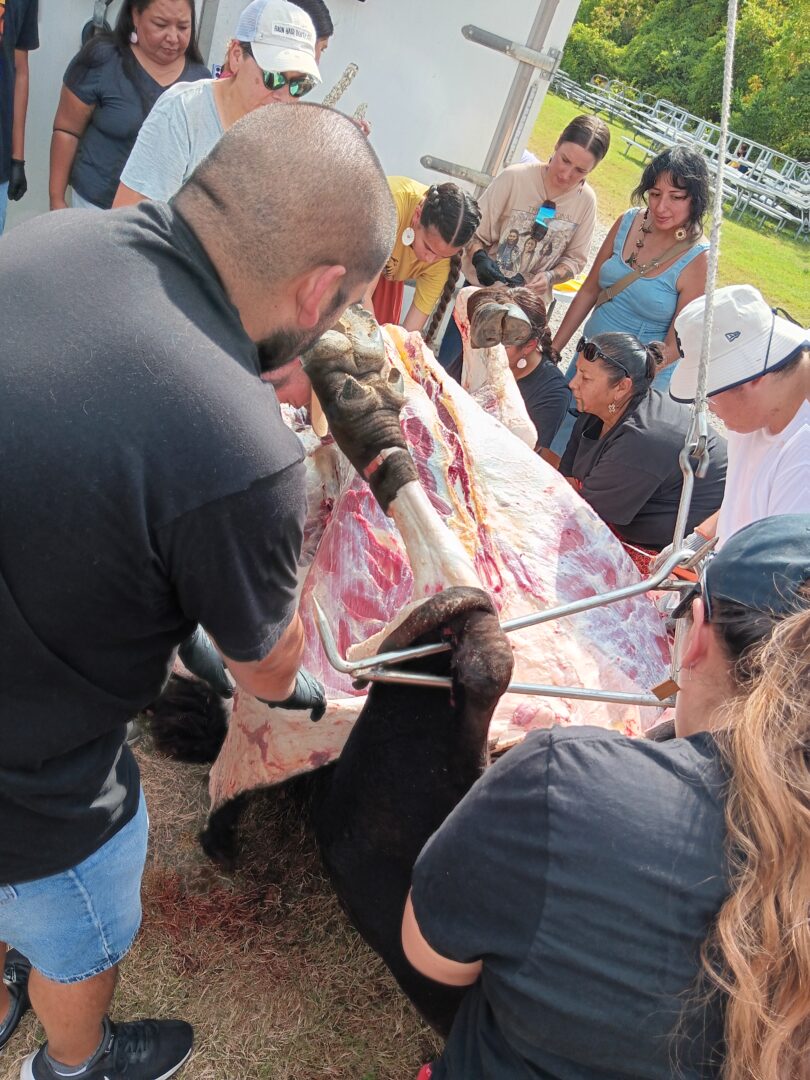
On Saturday, they traveled from Oklahoma City, Oklahoma, to Lawrence, Kansas, on a five-hour drive, and while they were tired from the day’s activities, they were so kind and welcomed my questions.
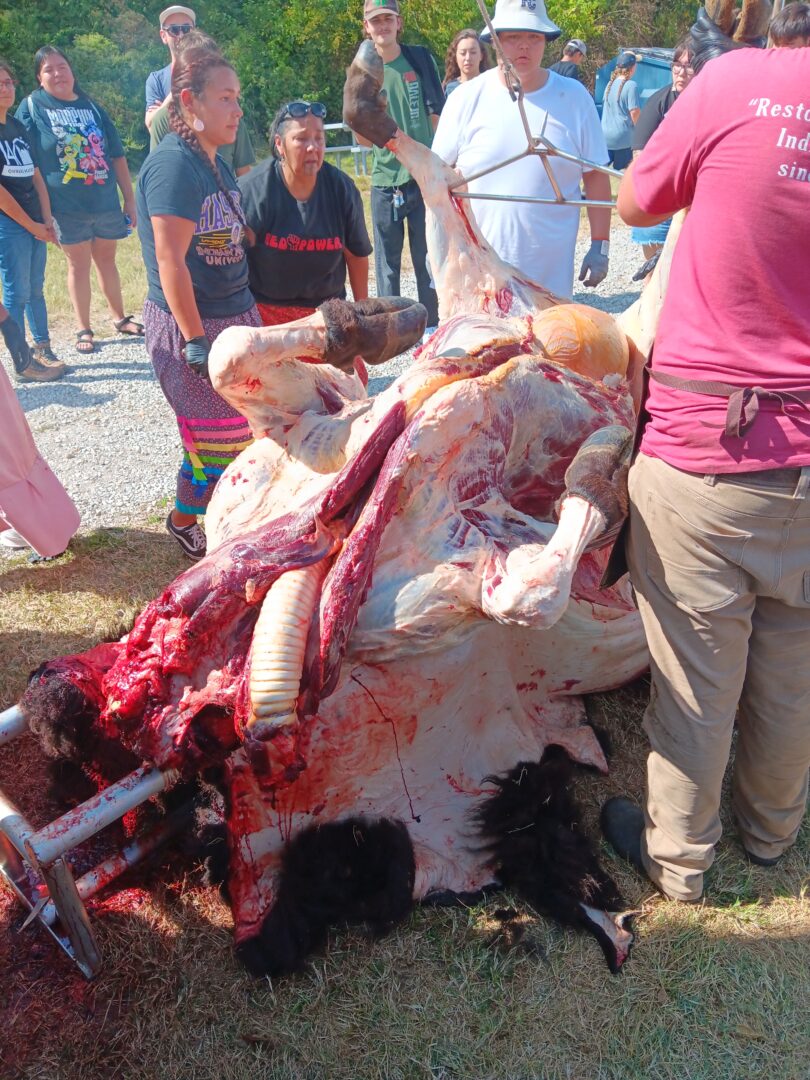
The whole process of watching them dismember and skin the bison was a humbling experience. Over a period of six hours, we enjoyed being around each other and sharing in this call back to our tribes’ histories, our ancestors, and the buffalo and how they helped our people survive and thrive.
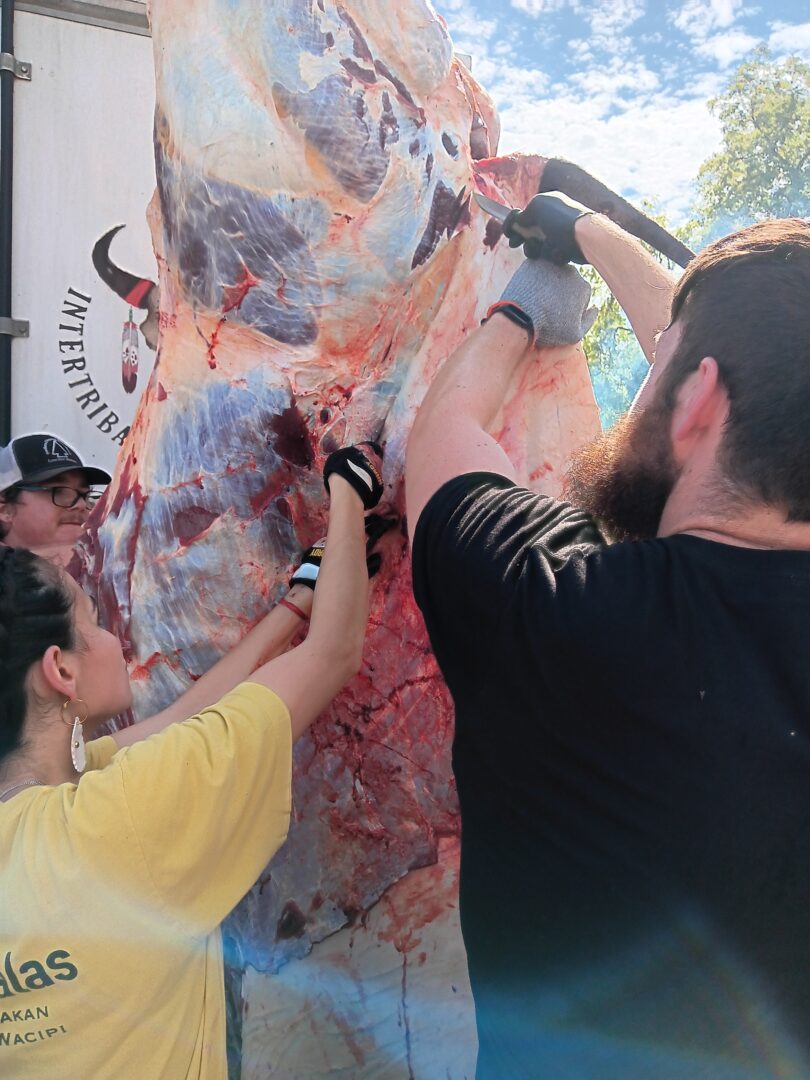
It is so easy to kill and destroy something, but to heal it, now that can take a lifetime, and it is with organizations such as the Intertribal Buffalo Council that we can expect to see the mighty buffalo roam the lands of the United States for many years to come!
